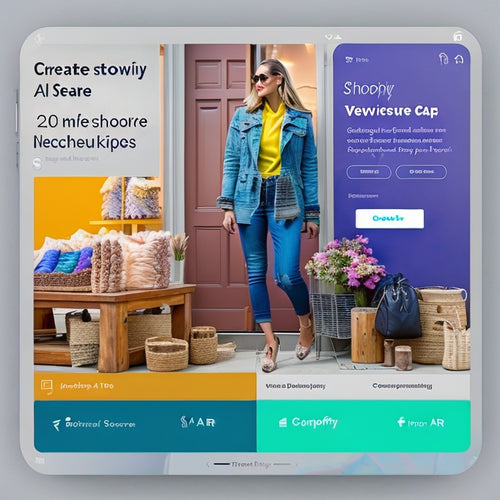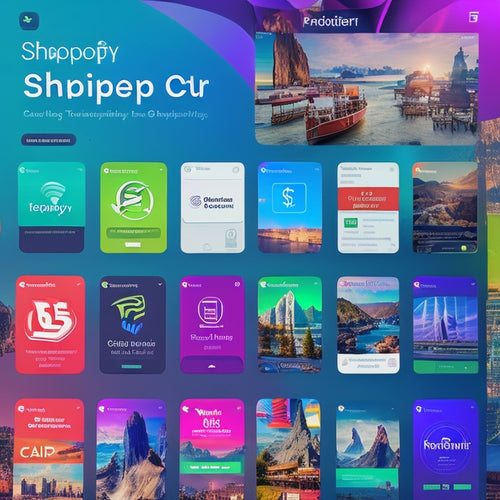
Mastering Product SEO Techniques for Ecommerce Success
Share
You're likely leaving money on the table because your ecommerce site isn't optimized for search engines. To master product SEO techniques, start by identifying the right keywords for your products and targeting long-tail keywords. Then, craft product descriptions that balance descriptive language with concise writing. Optimize your site's on-page elements, like meta tags and URL structures, to signal search engines about your content. Focus on technical SEO fundamentals, like page load times and image optimization, and prioritize mobile responsiveness to enhance user experience. By mastering these techniques, you'll reveal the secret to driving conversions and revenue – and there's even more to discover.
Key Takeaways
• Identify and target long-tail keywords to increase product visibility and drive conversions in ecommerce SEO.
• Craft unique, descriptive, and concise product descriptions to balance user experience and search engine optimization.
• Optimize on-page elements such as meta tags, images, and URL structures to signal search engines about page content and maximize visibility.
• Focus on technical SEO fundamentals like URL optimization, page load time, and image optimization to enhance ecommerce site performance.
• Prioritize mobile responsiveness, user-friendly navigation, and high-quality visuals to drive conversions through a seamless user experience.
Keyword Research Essentials
When it comes to product SEO, identifying the right keywords is important, as they not only enhance your website's discoverability but also inform web crawlers about the content and intent of your product pages.
You're probably thinking, 'Okay, but how do I find these magical keywords?' Well, you can start by targeting long-tail keywords that are more specific and less competitive.
Conduct a competitive analysis to see what your rivals are ranking for, and then try to one-up them.
Don't forget about local SEO, especially if you have physical stores or cater to a specific geographic region.
And, with the rise of voice search, optimizing for conversational keywords is essential.
Crafting Product Descriptions
By investing time in crafting high-quality, unique product descriptions that speak directly to your target audience, you can greatly boost conversions and propel your ecommerce business towards SEO success.
But, what makes a product description truly effective? Here are some essential guidelines to keep in mind:
-
Balance descriptive and concise language: You want to paint a vivid picture of your product, but avoid overwhelming your customers with too much information.
-
Prioritize key points and structure your content: Break up your description into easy-to-read sections, and make sure you're highlighting the most important features and benefits.
-
Keep your writing guidelines SEO-friendly: Use relevant keywords, and aim for a minimum of 300 words to maximize your SEO impact.
On-Page Optimization Strategies
Optimize your product pages for maximum visibility by leveraging a range of on-page optimization strategies that signal to search engines what your page is about and why it deserves to rank.
You'll want to utilize meta tags, like title tags and descriptions, to give search engines a clear understanding of your content. Don't forget to optimize your images with unique, high-quality content, and pay attention to your URL structure - it matters for SEO!
Technical SEO Fundamentals
You've fine-tuned your product pages with on-page optimization strategies, but now it's time to get under the hood and guarantee your ecommerce site's technical foundation is solid, as it's this foundation that will ultimately support your SEO efforts.
Think of it like building a house - you need a strong base to support the fancy decor. Here are three technical SEO fundamentals to focus on:
-
URL optimization strategies: Ensure your URLs are concise, descriptive, and include target keywords to improve search engine understanding and user experience.
-
Page speed: Aim for a page load time of under 3 seconds to avoid frustrating users and search engines alike.
-
Image optimization techniques and structured data: Use descriptive alt tags, compress images, and add structured data to help search engines understand your content and improve visibility.
Enhancing User Experience
How do you guarantee that your ecommerce site's user experience is seamless, intuitive, and ultimately drives conversions?
By prioritizing mobile responsiveness, you make sure that your site looks and feels great on any device.
Navigation optimization is also key - make it easy for customers to find what they're searching for, and they'll be more likely to stick around.
Visual content is also essential, so showcase your products in the best possible light. High-quality product showcases can make all the difference in convincing customers to make a purchase.
Frequently Asked Questions
How Do I Balance SEO Efforts With Other Marketing Strategies?
You're juggling multiple marketing balls - don't drop SEO! Allocate time for email marketing and paid advertising, but prioritize SEO efforts, as they drive long-term organic traffic and amplify other marketing strategies' impact.
Can I Reuse Seo-Optimized Content Across Multiple Platforms?
"You're a master chef, whipping up SEO-optimized content, but don't serve the same dish everywhere! Avoid content duplication to sidestep SEO penalties; instead, tailor your cross-platform optimization to each platform's unique flavor, ensuring your SEO strategies stay fresh and effective."
What Role Does Social Media Play in Ecommerce SEO Efforts?
You're wondering how social media fits into your ecommerce SEO strategy. Here's the deal: social media engagement boosts brand visibility, driving traffic to your site and increasing chances of shares, mentions, and backlinks that search engines love.
How Often Should I Update Product Information for SEO Purposes?
You're wondering how often to update product info for SEO juice. The sweet spot is every 2-3 months, as it keeps search engines crawling and indexing fresh content, boosting your product refresh frequency and SEO impact.
Are There Any SEO Benefits to Using Influencer Marketing Partnerships?
'Oh, you're about to discover the secret to SEO success! By partnering with influencers, you're essentially borrowing their extensive audience and credibility, boosting your brand's visibility and trust - and, yes, that means a significant SEO impact!'
Related Posts
-
Discover the Best Sitemap Apps for Shopify
This article aims to provide an analytical overview of the best sitemap apps available for Shopify, focusing on thei...
-

Marketing Shopify Apps Assist Merchants in Promoting Their Store, Products, and Special Offers
Marketing Shopify apps play a crucial role in assisting merchants in promoting their store, products, and special of...
-

Unlocking Revenue Potential: Join the Shopify App Store Revenue Share Plan
The Shopify App Store has implemented a new revenue share plan for its partners, aimed at unlocking their revenue po...

